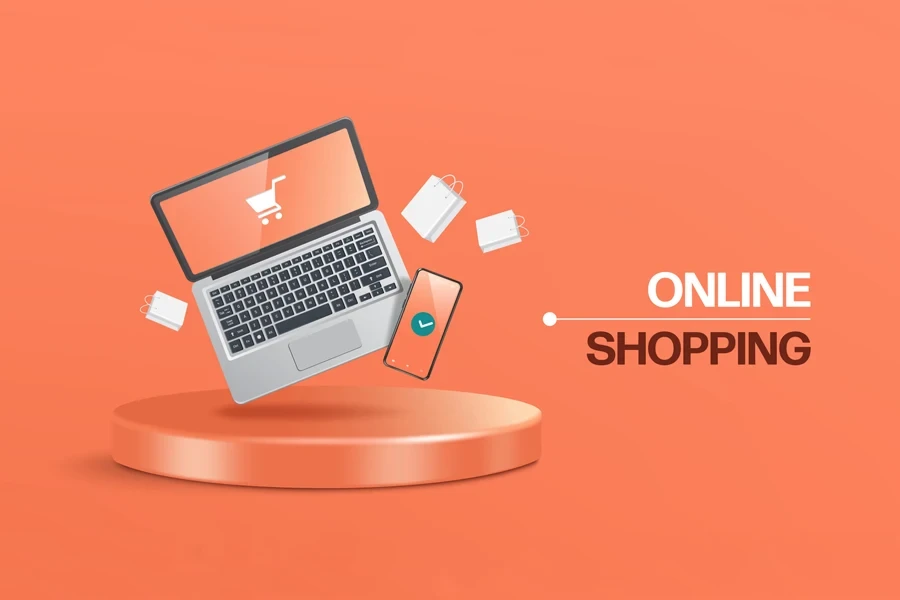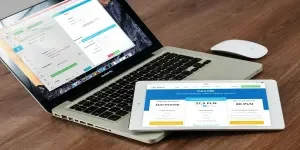You’ve probably seen those “Start an online store in five minutes!” ads. Sure, technically, you could throw together a basic website in a few minutes, but building a profitable online store is a whole different game.
The good news is that it’s 100% doable, even if you’re starting from scratch. The trick is to break down the process into clear, manageable steps so that you avoid becoming overwhelmed. So, whether you’re selling clothes, handmade products, digital downloads, or just about anything, we’ll walk you through how to launch a successful online store in nine simple steps.
Table of Contents
9 steps to follow when creating an online store
Step 1: Determine the store’s target audience
Step 2: Choose and source your products
Step 3: Pick your ecommerce platform
Step 4: Build your brand
Step 5: Register your business
Step 6: Set up checkout and shipping
Step 7: Go live
Step 8: Market your store
Step 9: Optimize your store
Final thoughts
9 steps to follow when creating an online business
Step 1: Determine the store’s target audience

First and foremost, a big mistake new store owners make is trying to sell to everyone. This, unfortunately, is the easy way to end up with zero sales and an identity crisis. Instead, you will need to find the people most likely to buy what you’re offering – your target audience.
Understanding your target audience is an important first step, helping you to reach the right customers and create a website that meets their needs and preferences. There are three main factors to consider when narrowing down your target audience:
- Demographics: Consider the target audience’s age, occupation, income, gender, education, and other characteristics
- Interests: What beliefs, lifestyles, hobbies, and other psychographic qualities do they have?
- Location: Where does your target audience live, or which markets do they have access to?
Once you gather this information, you can create a buyer persona, helping you to focus on your target market when creating content for your online store.
Cater to a niche audience instead of entering a competitive market. That’s because niche markets often have specific needs, so catering to them may present a better opportunity to make sales and build a loyal audience.
Step 2: Choose and source your products
Now that you know “who” you’re selling to, let’s figure out “what” it is you want to sell. Choosing the right products to sell is one of the most important steps in launching your online store, but you’ll be off to a strong start if you already understand your target audience.
Your social and professional networks and online research can provide valuable insights into what your customers want, helping you find products they’ll love. Here are a few tips that can help you discover suitable products:
- Connect with hobbyists and enthusiasts to understand their challenges and discover the latest products they want
- Do you have personal passions and interests? Use them to discover products that a like-minded audience will love.
- Keep an eye on product trends to catch wind of popular items
- Check out marketplaces to see their top-selling items
Once you pinpoint your perfect product idea, you can use any of these methods to make it a reality:
- If you’re crafty or have a unique skill (Think handmade jewelry, art, or skincare), consider making the products yourself
- Buy wholesale and resell by purchasing products in bulk, marking them up, and selling them for a profit
- Use a manufacturer that can help create original items for a niche audience
Dropshipping and print-on-demand, selling products without the need to touch an inventory
Step 3: Pick your ecommerce platform

This part determines where your store will live, so pick wisely. Some popular options to consider include:
- Shopify
- WooCommerce
- Wix
- BigCommerce
Most ecommerce platforms come with a store builder, allowing you to create a branded online shop with product pages, checkout, and a shopping cart. Even better, many of these builders use drag-and-drop tools so that you can customize your sites easily without any coding experience.
Many such platforms also allow you to manage shipping orders, sell at physical stores, analyze store data and customer behavior, and run marketing campaigns.
Step 4: Build your brand
Your brand is more than a logo – it’s how people feel about your store, which is why you need a strong base and to build a unique identity that shines through in your visuals and content. Here are some key brand elements to create for your online store:
- What does the brand stand for? The answer is the store’s values and missions.
- Choose a catchy store name. You can be creative here or use a free domain name generator for ideas.
- Create a visually appealing logo. Canva can be a good way to create logos quickly and easily.
- Add lifestyle and product photos so that consumers can understand what makes your brand stand out
Step 5: Register your business

This is certainly not the most exciting step, but it’s a necessary one. The information that you’ll need when registering your store depends on the store’s location, what you’re selling, and how you plan to run your business.
In America, you may need to register with state or federal agencies or go for industry-specific organizations. Here are some other factors to consider when registering your business:
- Choose a business model or structure (sole proprietorship, partnership, Limited Liability Company, and corporation)
- Check if your county or city requires licenses or permits to sell products
- Set up a business bank account to manage your brand’s funds and keep them separate from your personal spending
Step 6: Set up checkout and shipping

Okay, so your store is live. Now what? It’s important that consumers feel safe when buying from you, which requires suitable payment processing on your platform. To choose the right payment provider, consider the following:
- Different payment methods (consumers should be able to pay with PayPal, Shop Pay, credit cards, Apple Pay, and more)
- Multi-currency sales so that consumers can see prices in their local currencies
- Choose a provider with suitable transaction fees
- Ensure buyers provide additional security measures, like zip code or CVV verification
Note: Consider customizing your checkout with branding and payment options. Some ideas include one-click purchases, accelerated checkouts, pay-by-installment plans, promo codes/gift card options, and upsells.
Next, set up a way to collect sales taxes, ensuring your store’s backend can handle them correctly. If you’re unsure what to do, hire a tax professional. Then, create a solid shipping strategy to accommodate your products (and their variants), delivery options, and the location of your target audience.
You may want to offer free shipping on specific products or minimum order values for particular regions. Local customers may also appreciate pick-up options. Finally, give your consumers other ways to check out, such as via marketplaces, social networks, and Google (through the shopping tab).
Step 7: Go live
Now, it’s time to launch! Even if your store isn’t perfect, launching helps to get feedback and results about site usability. After this step, simply fine-tune your designs and settings and adjust your strategies accordingly.
Step 8: Market your store

Once you’re launched, it’s time to start promoting your store. You’ll want to consider the following points when creating your marketing strategy:
- Use social media to target your audience and organically engage with them
- Remember that most potential shoppers search Google first, so optimize your store for improved SEO rankings
- Use emails to engage customers and guide them through the buyer journey
Step 9: Optimize your store
Your first few months should be about testing what works. Whether you make sales or not, analyze these factors to see what you can improve:
- Check analytics to see what’s selling and where traffic is coming from
- Tweak your pricing, product pages, and offers, which provides a great way to test different approaches
- Always listen to customer feedback, as it may help point out things you’re unaware of
Final thoughts
Let’s be clear: starting an online store takes effort. You won’t get rich overnight, you will definitely make mistakes, and expect to experience many slow sales days (or even weeks). But if you’re willing to do the work, remain consistent in your approach, and keep learning, it’s likely you will be able to build a business that provides a stable online sales stream for your products.




